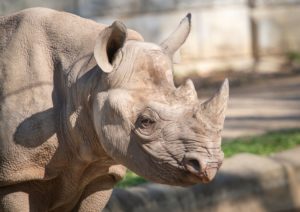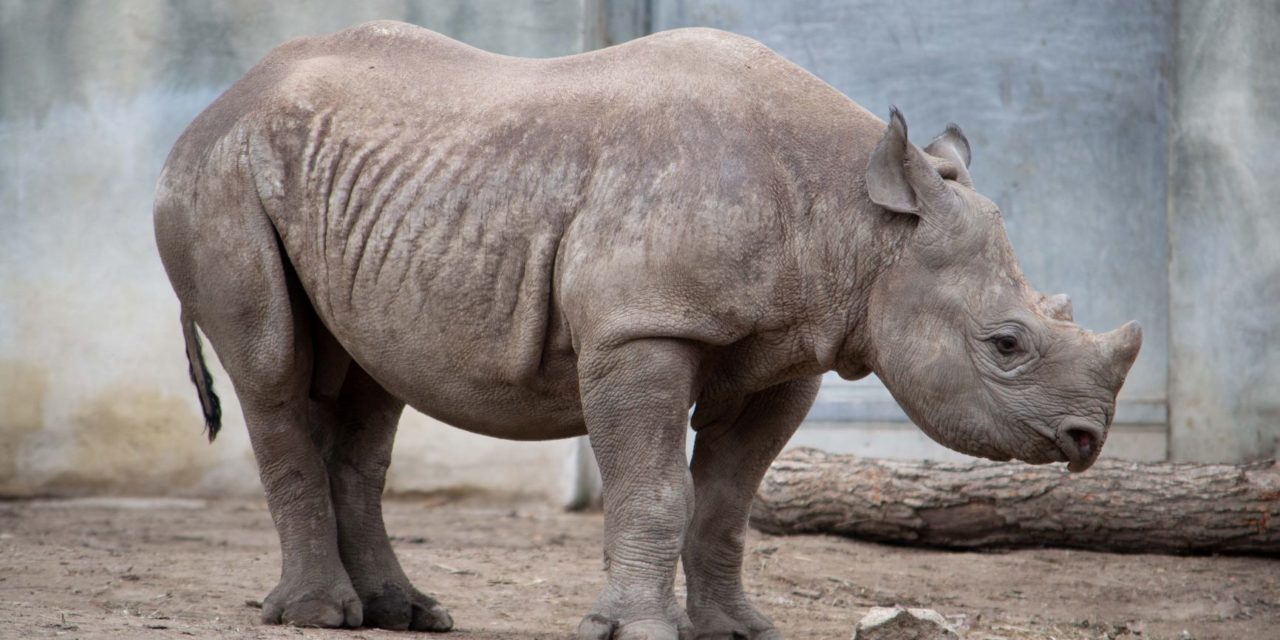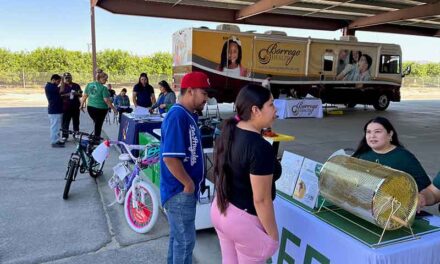Two Eastern Black Rhinos set to crash the neighborhood this fall
PALM DESERT/INDIAN WELLS – Two eastern black rhinos are the Coachella Valley’s newest neighbors arriving this November. As the Zoo’s new Rhino Savanna nears completion, The Living Desert is sharing more about the two eastern black rhinos who will make their debut in November.

Nia, female black rhino, Photo courtesy of Kyle Lanzer, Cleveland Metroparks Zoo
Jaali (pronounced Jolly) a 1 1/2 year old eastern black rhino will be arriving from the Potter Park Zoo in Lansing, MI, and almost 3-year-old Nia (pronounced Ny-a) will come from the Cleveland Metroparks Zoo in Cleveland, OH. Their arrivals are based on the Association of Zoos and Aquariums’ (AZA) Species Survival Plan (SSP) breeding recommendations that were set earlier this year.
“We are so excited to welcome Jaali and Nia to The Living Desert this fall,” said Allen Monroe, President/CEO of The Living Desert Zoo and Gardens. “This is the first time The Living Desert will be home to rhinoceros, and the team has been hard at work preparing for their arrival.”
Jaali was born Dec. 24, 2019 to mother, Doppsee, and father, Phineus, and his birth marked the first rhino birth at the Potter Park Zoo in its 100-year history. Jaali means “powerful” in Swahili, and according to his animal care team at Potter Park Zoo, he is very curious and loves attention. Nia, meaning “purpose” in Swahili, was born August 20, 2018 to mother, Inge, and father, Forrest. Her animal care team has shared that Nia is very intelligent and eager to learn and participate in her husbandry training.
“We can’t wait to introduce Jaali and Nia to their new home at The Living Desert,” said RoxAnna Breitigan, Director of Animal Care. “As one of only 25 AZA-accredited facilities to care for eastern black rhinos, we all work together collaboratively to ensure this iconic species doesn’t go extinct. These two have been strategically matched, and we have high hopes for their future breeding success here at The Living Desert.”
The new Rhino Savanna is an expansive, multi-species habitat that will transport guests right to their own African safari. Designed and built with state-of-the-art features that ensure animal wellbeing and care are the priority including wide-open grasslands, rocky terraces, and a mud wallow and watering hole. The Rhino Savanna will be an engaging environment not only for the animals, but also zoo guests. Joining the black rhinos will be a cast of 11 new species of furry, feathered, and subterranean friends including: springbok, waterbuck, pelicans, naked mole rats, and mongoose.
“The $17-million four-acre Rhino Savanna is only possible because of the incredible and steadfast support of our members, donors, and the Coachella Valley community,” Monroe said. “Rhinos are iconic symbols of the wildlife trafficking crisis, and this new habitat will help us educate our guests about the plight of the rhino and allow us to continue our efforts protecting the black rhino in Africa.”
The Rhino Savanna will showcase many of Africa’s iconic species, with the eastern black rhino taking centerstage and highlighting their current plight and the important conservation efforts underway to save the species. Currently listed by the IUCN (International Union for Conservation of Nature) as Critically Endangered, eastern black rhino (Diceros bicornis michaeli) number fewer than 5,600 individuals across Africa. Native to the savannas and grasslands of southern and eastern Africa, black rhinos are browsers eating from trees and bushes, have distinguishing features including two horns, a prehensile lip, large cone-shaped ears, thick skin, and mature adults can weigh more than 3,000 pounds. Black rhinos’ main threats are humans, and in particular, the current rampant poaching for their horns for ill-perceived medicinal uses.
“As a leader in desert conservation efforts, The Living Desert supports numerous projects to help build black rhino populations in Southern Africa,” said Dr. James Danoff-Burg, Director of Conservation. “We actively partner with organizations to support innovative anti-poaching efforts, engaging community education and empowerment programs, and combatting illegal wildlife trafficking across both Africa and here at home.”
Stay tuned for more updates as Jaali and Nia get ready to depart for The Living Desert later this year. To learn more about the new Rhino Savanna, click here.
Image Sources
- Nia: Kyle Lanzer-Cleveland Metroparks Zoo







